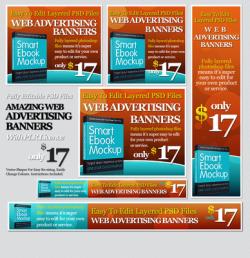
Paid advertising is becoming more and more advanced in terms of targeting capabilities, and this trend will continue to occur for the foreseeable future. How, you ask? One example includes Google’s Enhanced Campaigns, which allow users to bid higher or lower based on country, state, DMA, city, or even the zip code level, day of week, hour of day, and mobile devices (smartphones). Facebook advertising has allowed you to target specific demographics such as age, sex, marital status, education, and interests for several years now. However, now Facebook allows you to target users based on email addresses you already have called ‘custom audiences’ and offline habits through its ‘partner categories’. These are just a few examples of how paid advertising targeting capabilities are expanding at an incredibly fast rate.
All of these targeting capabilities are fantastic for paid advertisers IF you know the ins and outs of your customers. I am surprised how little companies know about their actual customers. Investing more time and dollars to understand your target market (their demographics, interests, affinities, etc.) will be essential to taking your business to the next level and could be a huge competitive advantage over your rivals. This is where the importance of data comes into play and why it is essential learn as much about your customers as possible, segment then into specific groups, and target them with the right message at the right time.
The Situation: Let’s try to illustrate this with an example: Let’s say we’re trying to increase enrollments for our university that’s located in Cleveland, Ohio with various degree offerings and about 20,000 students. Rather than just targeting 100 miles around the university and promoting various degree programs based on search volume, let’s look at the data we might already know.
The Data: We have a CRM database that contains a list of 5,000 students who’ve enrolled over the past 12 months that shows names, email addresses, degrees of interest, age, gender, cities, states, and zips. We’ve noticed that 50% of the enrolled students are interested in our photography degrees. We also noticed that 20% of enrolled students have zip codes corresponding to Lakewood, Ohio; 15% to Akron, Ohio; and the rest are scattered throughout Northeastern Ohio. We’re also able to see that 35% of enrolled students are between the age of 17-20 and skew female (about 65%).
The Strategy: Now that we have all of these insights about enrolled students, we can put this data to work to increase the chances that our advertising leads to more enrolled students! Rather than spreading the budget evenly across all degrees we offer (business, criminal justice, mathematics, photography, graphic design, etc.), we’ll allocate much more budget towards promoting the photography degree. In Google AdWords, we’ll also bid 20% higher for users located in both Lakewood, Ohio and Akron, Ohio respectively. Finally, for Facebook Advertising, rather than targeting ages 17-28, we’ll create a separate campaign for ages 17-20 and allocate more budget here and also bid a higher maximum cost per click.
Conclusion: The example above is simply to illustrate how the power of having the right data paired with proper segmentation, analysis, and smart targeting could be a huge difference-maker to the ROI of your advertising. It is imperative companies begin investing more in understanding their customers in order to maximize chances of success.
Author: Joe Castro
Courtesy of www.fathomdelivers.com
Leave a Reply
You must be logged in to post a comment.